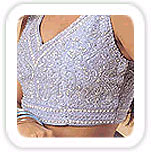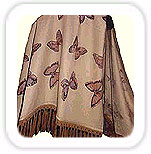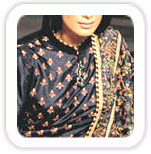100% Cotton Embroidery
Features:
POPELINE COTON
100% CO EMBRO. FABRICS
Poids/m1: 310gr
Poids/m2: 207gr
Laize totale: 150cm
| Model: | TY8038 |
|---|---|
| Trademark: | Tongyi |
| Origin: | France |
Features:
POPELINE COTON
100% CO EMBRO. FABRICS
Poids/m1: 310gr
Poids/m2: 207gr
Laize totale: 150cm
| Model: | TY8038 |
|---|---|
| Trademark: | Tongyi |
| Origin: | France |
Posted by FAISAL at 1:53 AM 0 comments


Posted by FAISAL at 1:46 AM 0 comments


Posted by FAISAL at 1:42 AM 0 comments
 If you needed to attend a school or college of embroidery where would you go? Apart from the internet, are there schools which could teach you in the classroom fashion - the beautiful world of embroidery. In this article, we explore some of the possibilities of getting certifications in embroidery, needlework and apparel designing.
If you needed to attend a school or college of embroidery where would you go? Apart from the internet, are there schools which could teach you in the classroom fashion - the beautiful world of embroidery. In this article, we explore some of the possibilities of getting certifications in embroidery, needlework and apparel designing.
One of them is the Netaji Subhash Open University at Woodburn, Kolkata (established in 1997) where you could get enrolled for Certificate in Embroidery and Needlework followed by an Advanced certificate in fashion, embroidery and textile designing.
Far down in New Zealand, the Wanaka school (established in 1984) by Gay Eaton of Dunedin is a long serving member and a recipient of a New Zealand Order of Merit for her contribution to embroidery. Every year, about 370 women travel from around New Zealand to attend the school and learn different aspects of needlework and embroidery skills.
 Mridula’s school of embroidery based at Chennai covers both Eastern and Western aspects of embroidery. Mridula Nagarajan - Founder of the School brings more than forty years of rich experience teaching and researching across the gamut of the Indian and International embroidery. The school Indian embroidery courses include Kantha from Bengal, Kasuthi from Karnataka, Kutch from Gujarat, Mirrorwork (Gujarat and Rajasthan), Phulkari from Punjab, Chikankari from Uttar Pradesh, Toda from Tamil Nadu, Kashmiri from Kashmir.(taught through regular school and correspondence courses). European embroidery courses include Spanish Blackwork, Cross stitch & Assisi, Lagartera, Bargello, Norweave and Kelim. (taught as regular courses). The school also has a comprehensive course on Aari & Zadosi (Tambour) Embroidery with a variety of applications taught. Dress making courses through which students can master pattern making and tailoring of dresses is also part of the regular curriculum.
Mridula’s school of embroidery based at Chennai covers both Eastern and Western aspects of embroidery. Mridula Nagarajan - Founder of the School brings more than forty years of rich experience teaching and researching across the gamut of the Indian and International embroidery. The school Indian embroidery courses include Kantha from Bengal, Kasuthi from Karnataka, Kutch from Gujarat, Mirrorwork (Gujarat and Rajasthan), Phulkari from Punjab, Chikankari from Uttar Pradesh, Toda from Tamil Nadu, Kashmiri from Kashmir.(taught through regular school and correspondence courses). European embroidery courses include Spanish Blackwork, Cross stitch & Assisi, Lagartera, Bargello, Norweave and Kelim. (taught as regular courses). The school also has a comprehensive course on Aari & Zadosi (Tambour) Embroidery with a variety of applications taught. Dress making courses through which students can master pattern making and tailoring of dresses is also part of the regular curriculum.
 The regular diploma certificate courses consists of the following groups.
The regular diploma certificate courses consists of the following groups.
Group I : Freestyle embroidery and Indian embroidery.
Group II : Counted Thread embroidery and European embroidery.
Posted by FAISAL at 3:58 AM 0 comments
 The history of embellishing fabrics is almost as old as fabrics themselves. Men folk have always exercised innovation to beautify the textiles used for various purposes turning this practice into a full-fledged industry today.
The history of embellishing fabrics is almost as old as fabrics themselves. Men folk have always exercised innovation to beautify the textiles used for various purposes turning this practice into a full-fledged industry today.Posted by FAISAL at 12:52 AM 0 comments
 Salwar Suits or salwar kameez is a typical Indian ensemble for women with grace and elegance unbound. "Salwar" is a loose pajama like lower that has a loose fit which is tied to the waist with a cord. "Kameez" stands for a kurta like ensemble that is worn through the upper part of the body. The elegance of kurta lies in the way it flaunts the cuts, the material it is made up of and the kind of embroidery it employs.
Salwar Suits or salwar kameez is a typical Indian ensemble for women with grace and elegance unbound. "Salwar" is a loose pajama like lower that has a loose fit which is tied to the waist with a cord. "Kameez" stands for a kurta like ensemble that is worn through the upper part of the body. The elegance of kurta lies in the way it flaunts the cuts, the material it is made up of and the kind of embroidery it employs.Posted by FAISAL at 12:51 AM 0 comments
 Kurta is a loose ethnic ensemble worn through the upper part of the body.It has a closed neck and length up to the knees. Although,it is precisely worn by men, they have become highly popular among women folk as well. Embroidery on kurtas is basically done around the four-button front, on side panels and pockets or cuff slits. Some common types of embroidery patterns done on it are as follows:
Kurta is a loose ethnic ensemble worn through the upper part of the body.It has a closed neck and length up to the knees. Although,it is precisely worn by men, they have become highly popular among women folk as well. Embroidery on kurtas is basically done around the four-button front, on side panels and pockets or cuff slits. Some common types of embroidery patterns done on it are as follows:Posted by FAISAL at 12:51 AM 0 comments